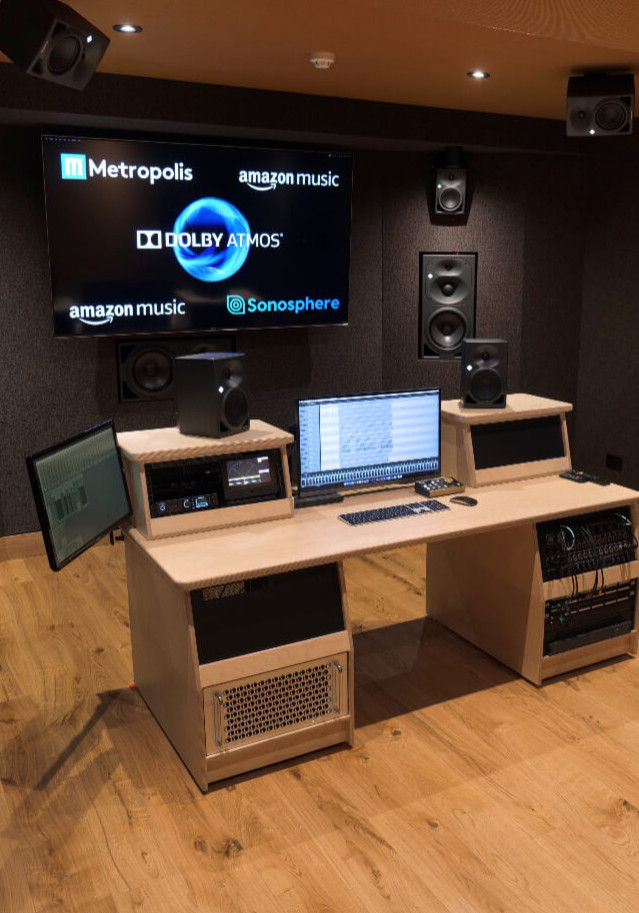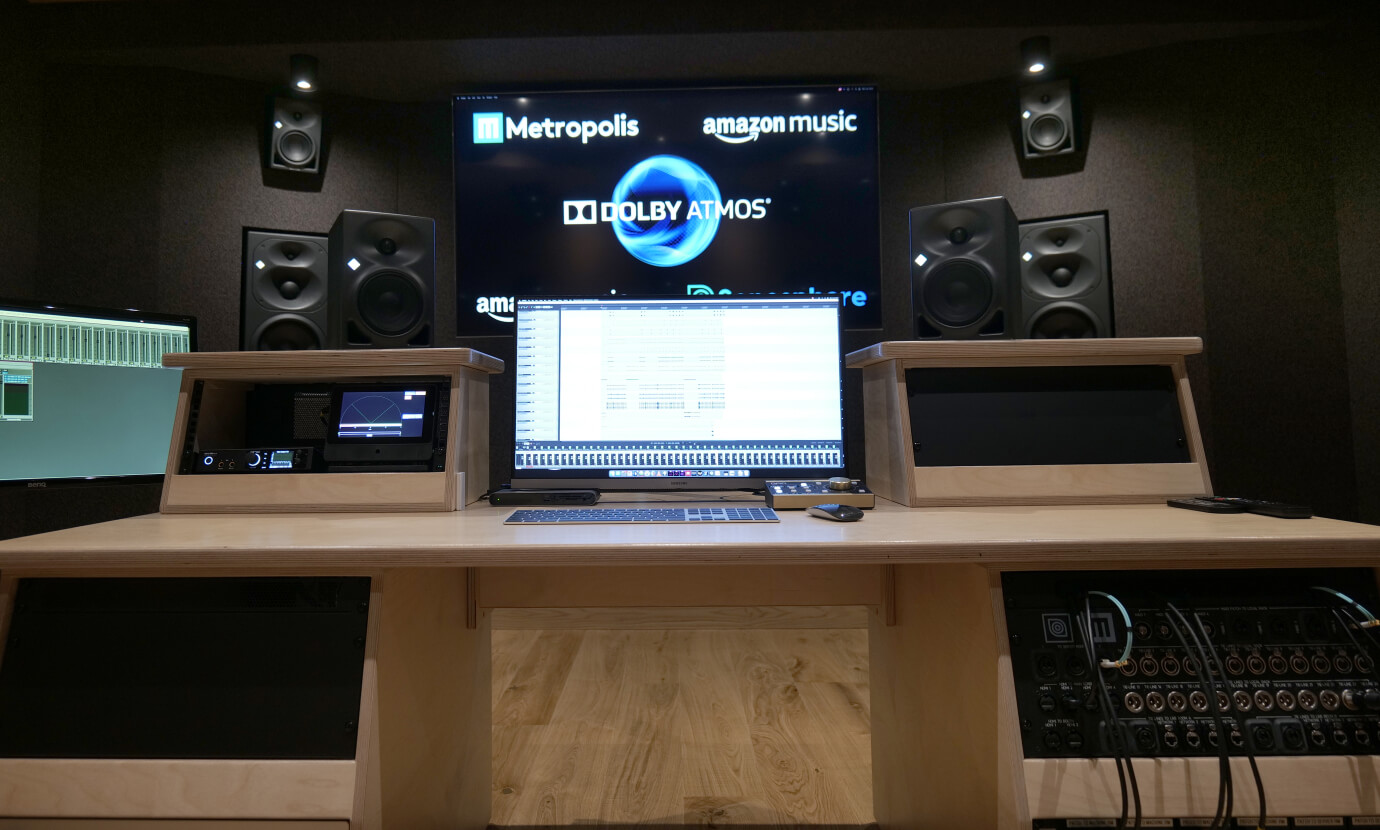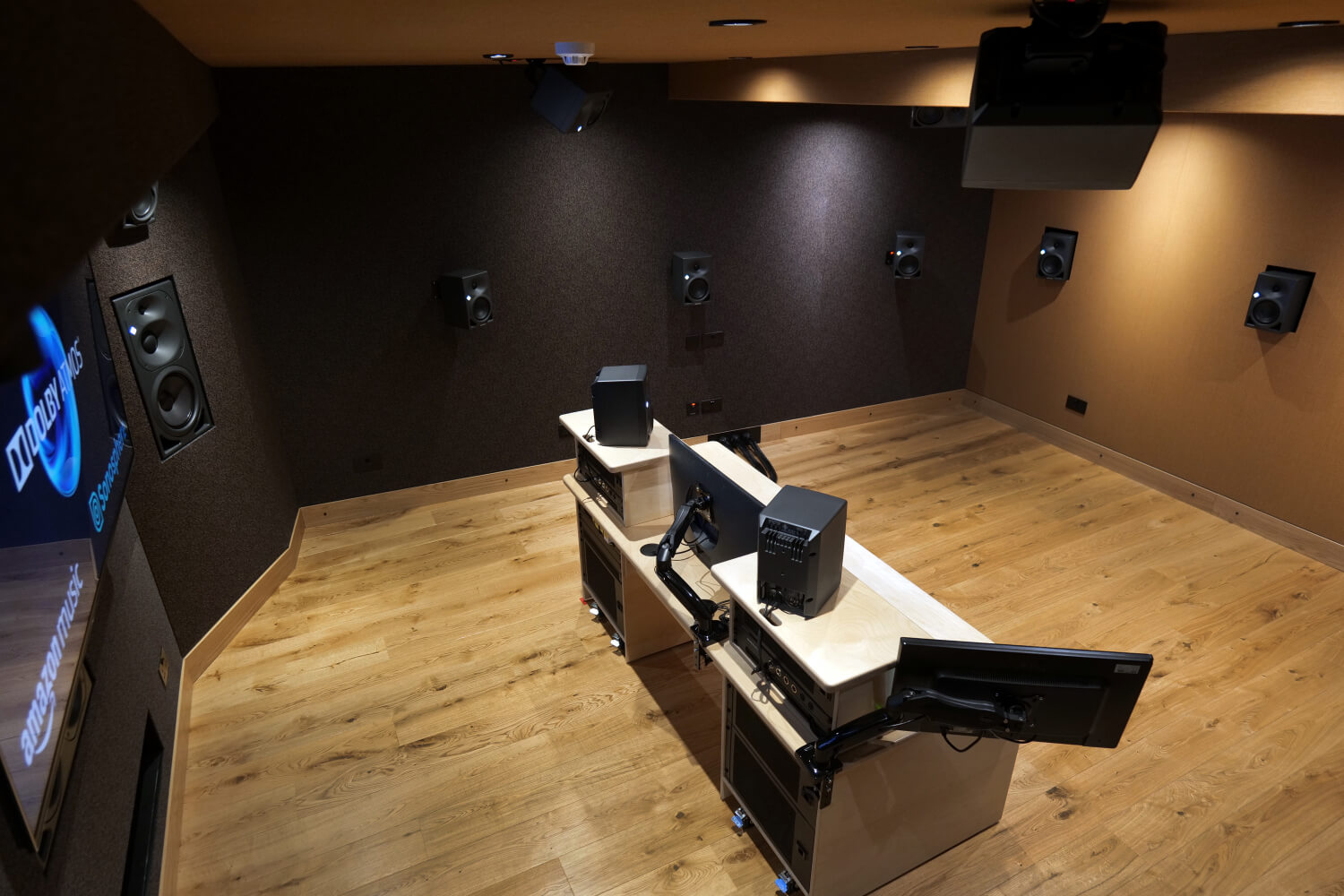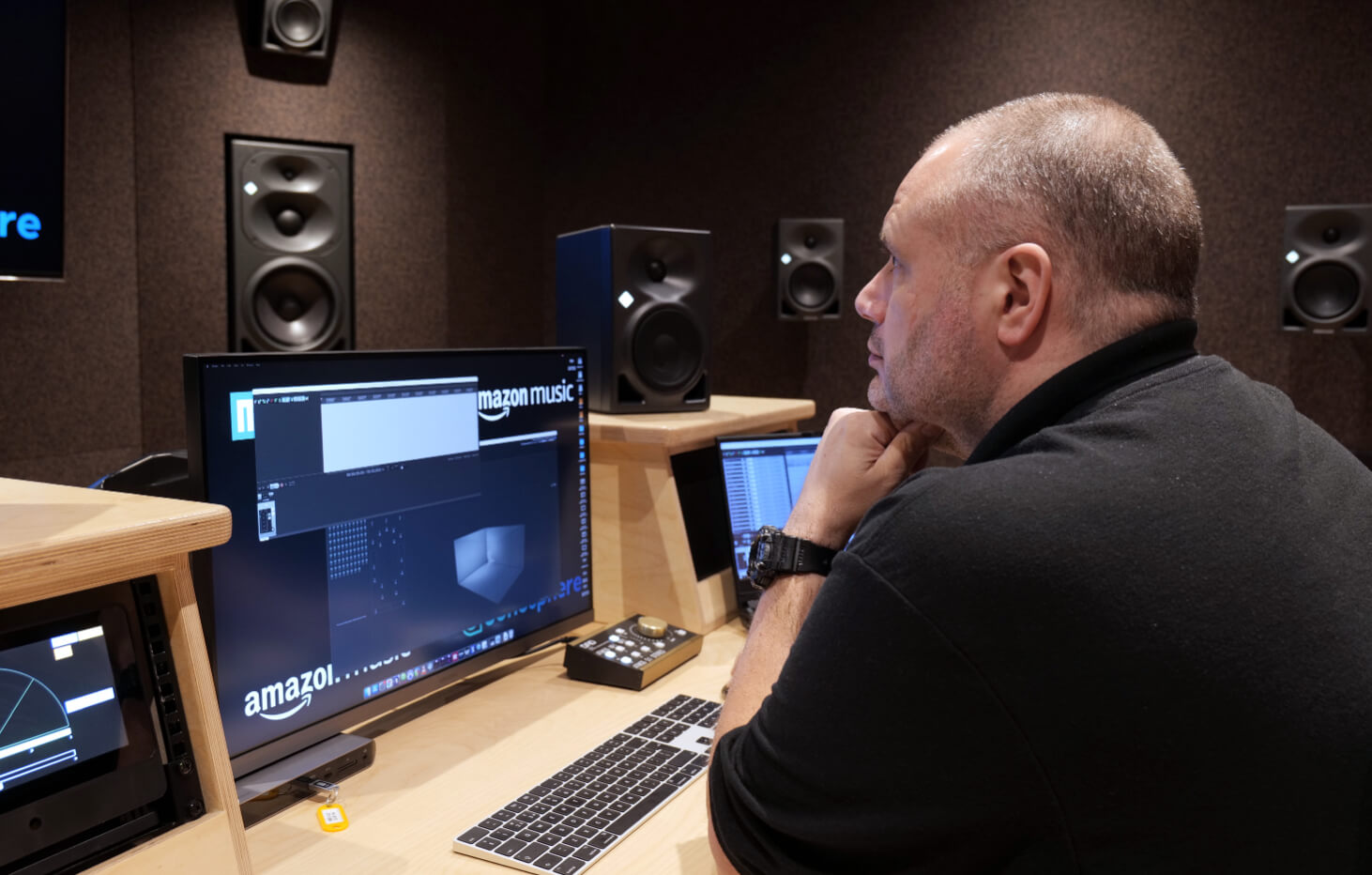Metropolis Studios, Europe’s leading independent recording studio, has opened a brand-new, state-of-the-art 3D audio recording facility at the heart of its West London complex.
Headliner recently paid the legendary studios a visit to hear from the team behind the new room, which as part of an exclusive content deal with Amazon Music, will become the streaming services’ UK-based HQ for immersive mixing.
From finding partners for live streamed concerts and mixing 3D audio for theatre shows to working with TV and film production companies on enhancing new and catalogue audio recordings, the impressive scope of the studio’s technological capabilities will provide the arts with a wealth of creative opportunities.
The control room pursues an ambitious and flexible ‘hub studio’ approach, enabling freedom from dependence on any particular mix hardware so that those using the studio can bring their own mixing console. With all the loudspeakers around the room arrayed at 30° of separation to each other, the new studio’s comprehensive immersive audio monitoring is designed to cater for all surround formats, including Dolby Atmos.







